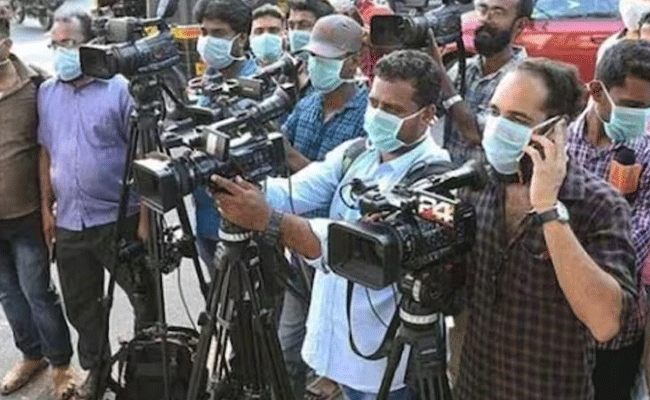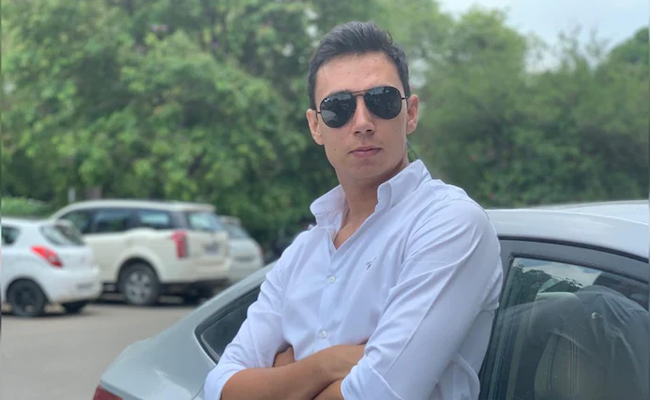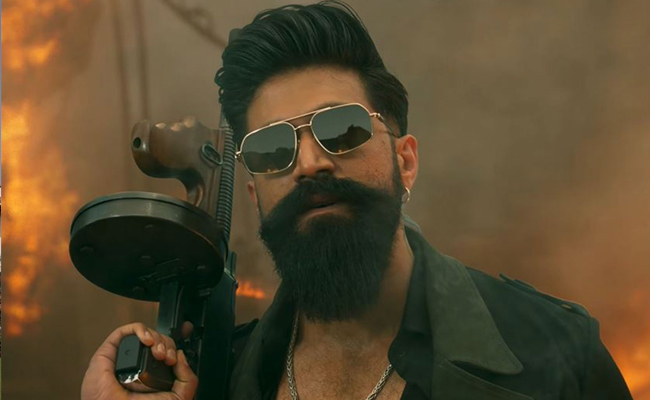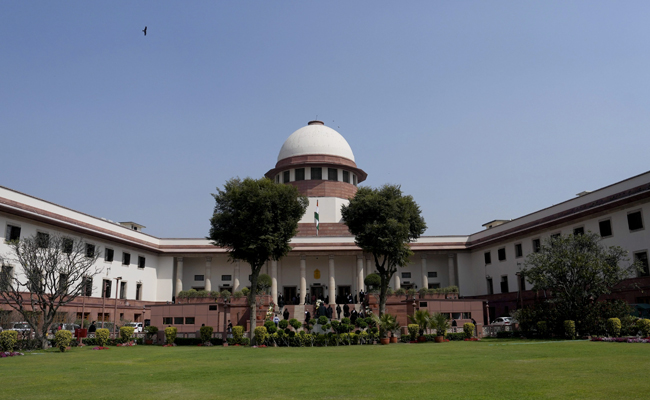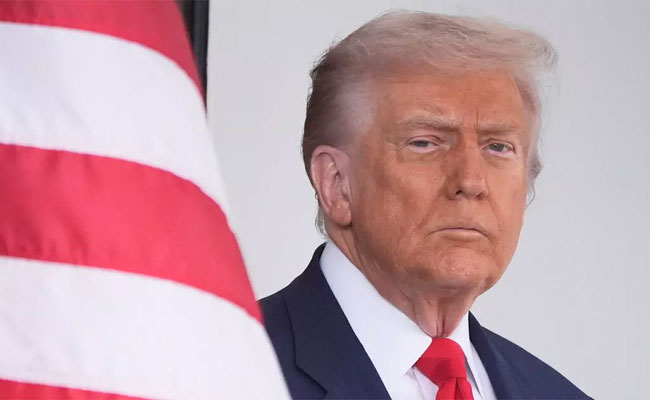The Caravan occupies the pride of place in Indian journalism. It popularised long-form narrative writing in India. It published many ground-breaking investigative stories on politicians, businesspersons and sports administrators. When mainstream media outlets failed to act as a corrective force, it took up the mantle and took on the powers-that-be with rigorous reporting and dogged follow-ups thanks to a team of fearless journalists. And leading them from the front for the last 15 years has been Dr Vinod K Jose, the executive editor of the magazine, who considers the story on Judge Loya’s death as the most important piece he oversaw at The Caravan so far. “Because there was an unprecedented amount of follow up stories - about 29 or 30 stories from The Caravan and this had led to public interest litigations in the Supreme Court, the press conference of four judges in the Supreme Court Collegium and some of our reported material went to the failed impeachment process of then chief justice, the Judge Loya stories is a journalism workbook in itself,” Dr. Jose said in a special interview for the 20th anniversary issue of Vartha Bharati.
In this interview, Vinod K Jose dwells on various issues affecting the Indian media, such as the future of long form journalism, dwindling press freedom rankings, concentration of media ownership in the hands of crony capitalists, increasing number of sedition charges against journalists and state’s malicious attempts to tarnish the reputation of independent media.
Edited excerpts of the interview.
Question: In these times of impulsive, bite-sized nature of public debates, how will long-form narrative journalism survive?
Vinod K Jose: Not just long form, any quality impactful journalism has a very important social and political role to play, which is to make the citizens informed about what is going on around them and to hold the powerful accountable. To me, that is the primary role of good, quality journalism, whether the form is long or short. Often the journalists, while chasing the deadlines, do not get enough time to do justice to that job. So a long-form journalism newsroom is born out of the need to give more time to reporters so that they can cover more ground to the story, they can get more sources opened up, and, if an aspect of it needs investigation, they can dig deeper, go wider. Long form also allows the reporter to build the characters, explain the tension well and make the final product more pleasurable for the readers. Quality long-form journalism is not commentary journalism stitched together by talking to five or six people. Quality long-form journalism covers a lot of ground by finding a great number of primary sources. In the process, quality long-form journalism has to do justice to three aspects of journalism. 1, reporting; 2, good writing and 3, scholarship. What I mean by scholarship is that journalists should explain the context in which an event is unravelling and the larger canvas on which something is drawn. It may not necessarily have millions of readers but it certainly would have thousands of readers who are in thought leadership positions. That is enough to pull off a quality, good long form product. And that is the space that The Caravan has been occupying since its relaunch in 2010.
Q: The Caravan is the best long-form publisher in India. But are you happy with its reach?
A: Putting print and digital together, The Caravan might have a readership of half-a-million. It is not a huge number in a country as big as India. But the kind of impactful stories we broke, such as the Commonwealth Games Scam, Aseemanand’s confessions from Ambala jail on the Hindu terror networks, Judge Loya’s death, Amit Shah’s son’s business stories, National Security Advisor Ajit Doval’s son’s company in the tax haven Cayman Island, Former Karnataka Chief Minister B S Yeddyurappa’s diary which had entries of money given to BJP’s national leaders, Rafale Deal stories to name a few, had all shaped the political conversations in the country from time to time, not because of our direct reach but because of their relevance, and how other media houses eventually reported our stories after we broke them. Many of our stories had an afterlife as they led to litigations and were discussed in the Parliament etc. There is no hiding of the fact that in a country as big as India, with more population than the entire continent of Africa, a long-form magazine in English has a limited standing in talking directly to the vast humanity who speaks myriad languages, and consumes all forms of media. New media models will need to evolve for a media to be truly able to play a direct role of disseminating facts, and to hold the powerful accountable. But the long-form, when done well, gives a kick to the individual journalist, because it gives a chance to the reporter to be wise and deep at the same time.
Q: India’s rank in the world press freedom index is sliding downward every year. India officially has been in denial. What’s your experience from the front line ?
I could feel the temperature going up in 2013, during my fifth year in The Caravan and one year before Modi came to power in Delhi. One could see a lot of advertising and public relations money pouring in with the rise of the Hindu rightwing rockstar Modi’s campaign. In the months preceding the 2014 election you could also see a lot of media changing hands, and editors losing jobs and new editors replacing them. You could see advertisers putting conditions on the publishing side of the news media. The message was very clear, even before Modi moved to Delhi. After Modi assumed office, you could see government sources denying access to independent reporters. You could see advertisers withdrawing even after they signed a release order. You could also see messages from ‘friendlier’ circles exhorting why you should not do a story on judiciary, finance ministry etc. I could see the pressure coming from multiple directions in the Indian media. Some happily succumbed. Some unhappily succumbed. Some happily resisted. Some unhappily resisted. Clearly, under such an ecosystem, it is natural that in quantitative terms such a change would get measured. The press freedom ranking has been on the decline. From a two-digit number, the ranking has nosedived to 150. That is pushing India closer to the league of the autocratic countries in the world. It is an irony because we call ourselves the world’s largest democracy.
Q: It seems the media fraternity itself is not hugely concerned about the challenges to their profession. Whose concern should it be then?
Of course, it must be the citizens’ concerns. If we let it just be the concern of the journalists, we are not going to find any change in the status quo. In my experience, 80 percent of the people in Indian newsrooms do not consider journalism as a social duty. It is not their calling. They treat it like any other job. They are there because they enjoy the attention they get, or like the power they possess as gatekeepers, as Kurt Lewin famously said. Or, they are there because of their social or caste privilege. They are there not because they want to cover poverty, or injustice, or hold the powerful accountable, or are moved by any critical understanding of getting a just order in place. The true journalists in my experience are not more than 20 percent in a newsroom, but they are very unhappy with how things take place in the media, and don’t often have the wherewithal to fight back, or shape things to the better. They have to move along in spite of knowing the compromises they see around them, because they have families to run, loans to pay back, and have to put food on the table. The 80 percent will constantly validate the interest of a compromised owner, or a political master or ideology they feel like pleasing. If we leave the media just for the media professionals, things will not change. The public will have to step in to build better media. The public, and the communities had a bigger role to play in the 19th century, but by the 20th century, the libertarian press model reduced the role of the public in the media.
Q: Media ownership too has become problematic. Major stakes in the media are owned by crony capitalists. Has this dented the credibility of Indian media?
Media ownership pattern has been a big problem in most of the countries. But democracies have always checked it by way of public pressure. India had monopolistic and trade practices acts which restricted corporations with big business interests from purchasing media houses. But at some point, by the wisdom of the free market, we had gotten rid of that law. Now, big monopolies who are closer to the people in power have entered the media in a big way. This has always been regarded as one of the biggest threats to press freedom and we are witnessing that openly in India. Opposition parties are quite silent. Public is quite silent. There aren’t any strong voices from within the institutions of journalism for multiple reasons. And the biggest losers are the people of India. But, another way of seeing such a bleak picture is that this is also an opportunity. An opportunity to fight for change. To build new media models.
Q: What has been your most challenging assignment so far and why?
Most challenging story that I have supervised is the series of investigative stories that The Caravan published on the death of Judge Loya. Here was a politically charged case of the fake encounter killing of Sohrabuddin, his wife Kauserbi and witness Prajapati where the CBI had, in its investigation, found Amit Shah guilty and had arrested him and sent him to jail. The Supreme Court had shifted the trial from Gujarat to Maharashtra. The Supreme Court had instructed that the same judge should hear the matter. But as soon as Modi came to power, we saw the transfer of that judge which actually was against the Supreme Court’s order. But we saw silence then. Then came Judge Loya, as the second judge. And he died of a heart attack. This was how the news was presented in the newspapers. But the family of Judge Loya broke their silence and said how the judge was pressured to give a judgement acquitting Amit Shah. The family also said how Loya had an offer of Rs 100 crore by the Chief Justice of Bombay High Court himself. When The Caravan broke these stories there were pindrop silence first. We later did multiple stories on what actually transpired in the post mortem room, which busted the claims of police and government story on Loya’s death, and what the employees of the guesthouse had to say etc. We did 30 follow-up stories over two years and this led to a public interest litigation in the Supreme Court and a failed impeachment process of the then chief justice.
Journalists are being slapped with sedition charges, media organisations are being raided citing financial irregularities. You, yourself face ten sedition cases. Where will this lead to?
Many journalists in India today are booked under draconian and colonial laws which did not make any sense for a country which gladly identifies itself as the world’s largest democracy. For sheerly doing the work of journalism, sedition cases are used to harass journalists. Weaponizing the laws, put in the rule book originally by a colonial government, is the norm of the day now.
Media critical of the establishment are being targeted regularly. Stories are being planted to tarnish their reputation. The Wire's meta coverage is just a case in point. What are the precautions anti-establishment media have to take to avoid such traps?
It is very important for journalists to pay attention to the details, documents, leads, and sources; vet them multiple times and to have strong bullshit detectors put into the process of editing, fact-checking and legal reading. Journalism is an act of collaboration certainly by the sources, reporters and editors, and within that there are many kinds of processes that have to be followed especially with investigative stories. It is all the more important that the investigative journalists slow down and pay close attention to all aspects of the reporting and production of such stories. Having said that, there’s a big industry to fool credible journalists, and destroy their reputation, so that the public trust is destroyed. We are no longer watching the destruction of journalists, the game is to destroy journalism itself.
Let the Truth be known. If you read VB and like VB, please be a VB Supporter and Help us deliver the Truth to one and all.
New Delhi (PTI): A prominent member of India's shooting coaching staff, Ankush Bhardwaj, has been suspended by the national federation after a minor shooter accused him of sexually assaulting her during the National Championships last month.
NRAI (National Rifles Association of India) confirmed that an FIR has been filed against Bhardwaj in Faridabad. Bhardwaj, a resident of Mohali, has been booked under Section 6 of POCSO Act (aggravated sexual assault), and Section 351(2) of the Bhartiya Nyaya Sanhita (criminal intimidation).
"NRAI has suspended him and we will issue a show-cause notice," NRAI secretary Rajiv Bhatia told PTI.
ALSO READ: SC defers hearing to Jan 13 on pleas challenging EC’s special intensive revision of electoral rolls
"He has been suspended on moral grounds. Now, he has to prove himself innocent. Till the inquiry is not completed, he will not be associated with any coaching activity," he added.
Bhatia said NRAI had recommended Bhardwaj for a place in the 37-strong coaching team after the Paris Olympics in 2024.
"It was on the recommendation of the NRAI that he was appointed by SAI as one of the coaches. It is a case of sexual harassment which happened in Surajkund," said Bhatia.
According to the FIR filed by the victim, she was targetted last month during the National Championships at the Karni Singh Range.
The girl, who has been training with Bhardwaj since August last year, stated that she was left traumatised by the incident and spoke up in front of her mother on January 1 after being persistently probed.
In her FIR, the 17-year-old has alleged that Bhardwaj used to call her for training at venues such as Mohali, Patiala, Dehradun and Delhi but she would always return home the same day.
However, on the day of the incident, the victim said she went to the Karni Singh Range unaccompanied in a taxi to compete in the Nationals.
The girl said that when she was about to leave for home after finishing her competition, the coach asked her to stay back to analyse her performance.
She stated in her complaint that the coach first requested her to meet him at the lobby of a hotel in Surajkund area of Faridabad. However, upon her arrival, he allegedly coerced her into coming up to his room, claiming a more focused discussion was required.
"The coach asked me to come to the elevator area. After that, when I went to the elevator area, coach sir told me that he had booked a room here, so come to my room. I will discuss the match with you there.
"He took me to a room on the third floor, and discussed the match. After sometime, I said to sir that I wanted to go home, but he told me that he would crack my back," she said, referring to a physiotherapy technique of post-competition recovery.
"I immediately refused. Then sir forcibly made me lie face down and sexually assaulted me and when I opposed, he threatened me," the victim stated in the FIR.
"He threatened me not to disclose the incident or else he would sabotage my professional career. I got really scared after the incident and did not tell anyone," she stated, adding that she eventually told her mother after she repeatedly asked her on noticing change in her demeanour following the incident.
A senior police officer said that a probe is underway.
Bhardwaj, a former pistol shooter, had served a doping ban in 2010 for the use of a beta-blocker during his competitive days. Beta-blockers are banned for athletes engaged in disciplines like shooting, archery and billiards as they help reduce heart rate, muscle tremors, and anxiety.

